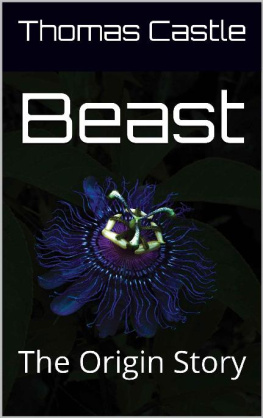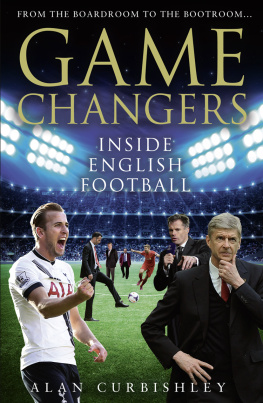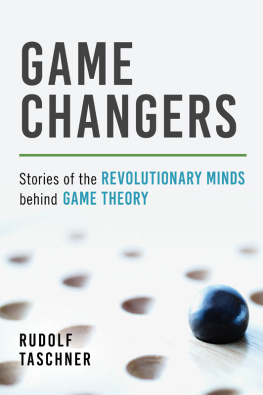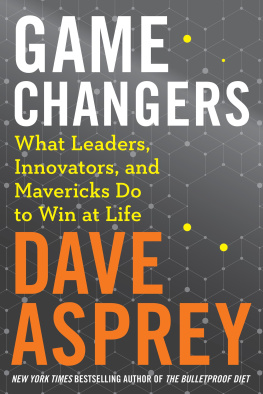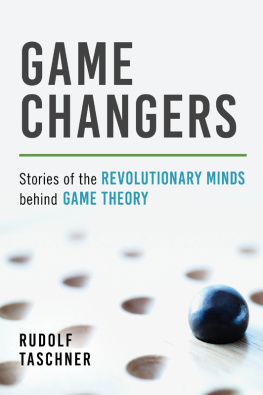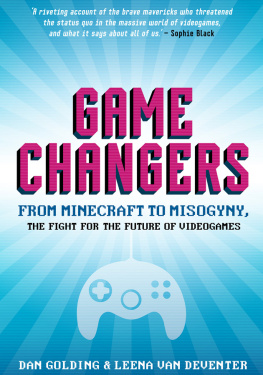ABOUT THE AUTHOR
George Castle witnessed and/or covered many of the Game Changers chronicled in this book over a lifetime watching baseball in his native Chicago and on road trips coast to coast.
Growing up in the cheap seats at Wrigley Field and old Comiskey Park, Castle eventually switched to the pressbox for a 35-year career chronicling baseball, along with offseason diversions such as the NHL and NBA. Hes worked for newspapers, magazines, and online sites. From 1994 to 2010, he hosted and produced Diamond Gems, a weekly syndicated baseball radio program. And he has served as historian for the Chicago Baseball Museum.
Baseballs Game Changers is his 13th book overall since 1998 and fourth for Lyons Press. He also has written four childrens books focused on teams histories.
He lives in Chicagos northern suburbs with wife Nina, border collie mix Patches, and 23-year-old African Grey parrot Casey. Daughter Laura, a contributor to this book, acquired her love of baseball from the old man.
One game changer he has not witnessed much in Chicago are multiple World Series championships.
ACKNOWLEDGMENTS OF A TRUE TEAM EFFORT
Id call myself a tape archaeologist, pulling in from left field long-lost audio- and videotape of baseball game action and interviews that youd think was never saved, but in fact was recorded by some far-flung fan.
But while building Baseballs Game Changers chapter-by-chapter, photo-by-photo, I never figured the Harrison Ford in me would extend to the still lifes of the game.
As I extend thanks to a veritable 40-person roster who assisted with this book, a primary appreciation must go out to three people who helped bring a spectacular historical photo to these pages.
For decades, I was aware of a photo taken by Earl Gustie in the Chicago Tribunes color studio in Tribune Tower early in 1960. The image portrays the Cubs Ernie Banks and the White Soxs Nellie Fox, fresh from receiving their respective leagues 1959 Most Valuable Player Awards, posing around a giant TK-41 color TV camera with WGN baseball announcer Jack Brickhouse. The photo, originally shot for the April 9, 1960 Tribunes TV Week Saturday weekly supplement, promoted the inauguration of WGNs color telecasts of Cubs and White Sox games. WGN was the second local station in the country to air baseball in tint after Cincinnatis WLWT for Reds games in 1959, and five years after NBC began color broadcasts of World Series games.
The Banks-Fox-Brickhouse photo was published in the Tribune on several occasions in the not-distant past. Individuals also possessed copies. But when I requested the use of the photo from the newspaper itself, top editors Mark Jacob and Robin Daughtridge could not locate a copy in the files despite an exhaustive search.
Good fortune is always welcome, though. Somehow, I stumbled upon the photo in the holdings of Danon Gallery, an art house with a modest sports photo collection, in Evanston, Illinois. As an intermediary between owner Bob Danonstill proud of his youthful days as a Chicago ballpark vendor in 1962and Jacob and Daughtridge, I arranged a return of the photo to its original owner. The end result of that process is being able to share that photo with you as part of our Television chapter.
Jacob, Daughtridge, and Danon werent the only folks expending energy on our behalf. Comcast SportsNet Chicagos Jeff Nuich, one of the best media relations persons in the country, and CSN Chicago production chief Jim Corno Jr. arranged a photo shoot of their baseball production crew for several video-oriented chapters here. CSN Chicago boss Phil Bedella and top producers Sarah Lauch and Ryan McGuffey are also quoted in these pages.
A gaggle of big-league team media relations officials, archivists, and photographers came through big-time responding to requests. Included were the Angels Tim Mead and Matt Birch; the Twins Dustin Morse and Brace Hemmelgarn; the Marlins P. J. Loyello and Robert Vigon; the Red Soxs Kevin Gregg and Michael Ivins; the Yankees Jason Zillo; the Pirates Dan Hart; the Dodgers Mark Langill, and the Athletics Adam Loberstein. And, as usual, Chicago Baseball Museum webmaster Carol Kneedler was lightning fast in response to fulfilling photo requests.
A particular shout-out goes to Hall of Famers who were most patient with me. Leading the pack was true gentleman Andre Dawson, who returns calls in a manner not often seen in the 21st century. No wonder Dawson was the first enshrinee asked by the Hall of Fame to help escort President Barack Obama in his 2014 tour through Cooperstowns displays. Goose Gossage was opinionated as usual. Reds voice Marty Brennaman, a past Ford Frick Award winner in the Halls announcers wing, sported the same candid style off the air as on. A profound session was with fellow Frick honoree Milo Hamilton, who shared his thoughts four months prior to his September 2015 passing.
Speaking of the Hall of Fame, photo archivists John Horne and Ken Roussey were their usual helpful personas. John Thorne, Major League Baseballs official historian, led the way to some important sources of research. As usual, the Morton Grove and Skokie (IL) public libraries lent their assistance.
Meanwhile, Charlottes Leigh-Ann Young, amid her own quest to find a tape of her late father Rube Walkers voice, was most gracious in tapping into the elder Walkers historic photo collection. Much closer to home, wife Nina Castle and daughter Laura Castle were Tony Phillipstype utility players, doing a little bit of this, a little bit of that in assisting an oftentech-challenged author. This time, Laura added her first-ever photo credit. My books, dating back to 1998, have truly been family projects.
In the long, sometimes lonely hours of transcribing and writing, mans best friend is invaluable as companion and informal doorkeeper. Ill pay tribute here to a beautiful, petite basset hound named Abby, long my chief office dog, who passed away much too young of a sudden illness while I wrote this book. Lauras dog Kona and a new family addition, Patches, a strikingly handsome border collie mix, are in training for the office dog job.
Last, but never least, is my double-play partner, Lyons Press editor Keith Wallman, collaborating for his third book with me. Keith and I know each others moves almost by heart. Every author should have an editor as conscientious as Keith.
ALSO BY GEORGE CASTLE
When the Game Changed: An Oral History of Baseballs True Golden Age: 19691979
Throwbacks: Old-School Baseball Players in Todays Game
Baseball and the Media: How Fans Lose in Todays Coverage of the Game
The Million-to-One Team: Why the Chicago Cubs Havent Won a Pennant Since 1945
The I-55 Series: Cubs vs. Cardinals
Entangled in Ivy: Inside the Cubs Quest for October
Sweet Lou and the Cubs: A Year Inside the Dugout
Where Have All Our Cubs Gone?
The 1919 White Sox assemble for a group portrait.
The Black Sox
Players Fixing Games? Never Again!
The sordid Black Sox affair of 19191921 was like a pressure cooker exploding. Gambling and attempts at game-fixing had been intertwined with baseball since touts roamed the sidelines of matches on those green fields in the 1850s.
Once the mess broke out in the open and baseballs version of capital punishment was meted out, baseball never experienced a repeat, nor even hints of the same. Sure, you have the generation-long Pete Rose affair, but Rose was accused of betting on his own team, not actually trying to fix a game in which he played or managed. The specter of throwing games was squarely on Bowie Kuhns mind as he probed Leo Durocher in the winter of 1969-70, but nothing was ever hung on The Lip.


